Common elands are massive bovids, impressive in their sheer size and beautiful spiral horns. They are shy animals, so unlike the abundant impala, wild sightings are few and far between. This makes them all the more interesting.
They are orange-brown with vertical white stripes down their side bodies and a tail that ends in a distinctive tuft of black fur. The common eland resembles a cow in more ways than one, both in appearance and behavior.
The giant mass of an eland is quite a sight to see in the bush and primitive drawings of the large antelope on many cave walls and rock faces. Although, how much do we really know about these African animals?
Check out these awesome eland facts to find out more.
What is an Eland?

The eland is the second largest antelope in the world and belongs to the ‘spiral-horned‘ subfamily, along with the majestic kudu. The common eland is only slightly smaller than its cousin, the giant eland.
The common eland is widespread throughout east and southern Africa. From the grassy plains of Kenya to Botswana’s semi-deserts.
With its thick neck and bull-like dewlap, this ox-like antelope is one of the most adaptable ruminants. You can find one in almost any type of African habitat except for swamps and forests.
Both males and females have tightly spiraled horns and they are tawny-colored. However, as they age, their body color changes to bluish-gray and almost black when they’re older.
Males have a tuft of black hair that grows out of their dewlap – the loose skin that hangs from their neck.
Eland Size
Elands are massive. The common eland is the second largest antelope species, right behind the giant eland.
Males are larger in body size, however, females take the cake for the biggest horns. Their spiraled, almost straight, horns are between 43 and 69 centimeters in size, with females sporting slightly larger horns.
As for their body size, males can total up to 345 cm from the snout to the start of the tail and stand up to 1.83 meters tall.
The average male eland weight is between a whopping 400 and 940 kilograms.
Females are a tad smaller, at a maximum of 280 cm in length and 1.53 meters tall. However, they are still pretty hefty, weighing up to 600 kg. We’ll blame it on the post-baby weight.
The Not-So-Speedy Eland Animal
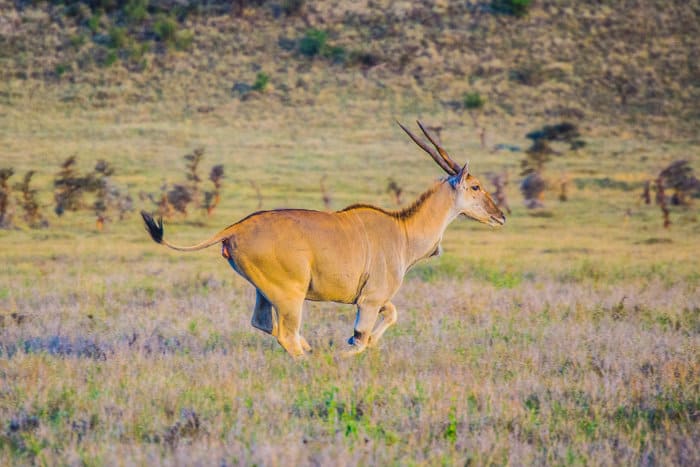
If you’re wondering how such a huge hunk of antelope can run away from predators quickly… They can’t.
It may be the largest African bovid, but it is also the slowest antelope in the world. Its maximum speed is around 40 kph. Which isn’t very fast when a lion that can run double the speed is chasing you.
The Common Eland’s High-Jump Skills
Okay, so elands aren’t the savanna’s speediest animals. They have some pretty awesome skills nonetheless. Some of these may come in handy when trying not to land up as a meal.
They are fantastic jumpers and don’t even require a run-up. They can jump up to 2.5 meters from standing still. So, if they happen across a fence in the wild, they’ll have no problem clearing it.
Common elands also have incredible endurance. They can trot at a steady pace for quite some time.
Eland Predators
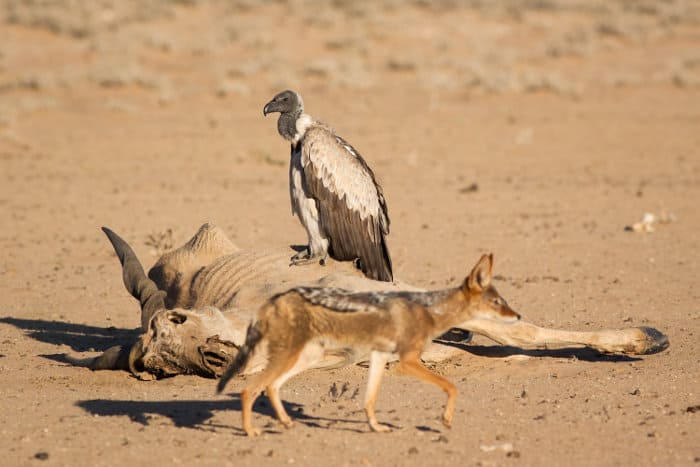
Elands are an important food source for large African predators. Which is unfortunate for them, considering their slow speed.
Lions, cheetahs, hyenas, and African wild dogs prey on elands. Thankfully, their large size means that they’re not the easiest takedown. This makes calves and adolescents a bigger target and the herd has to work to conceal the young ones.
If an eland spots a predator near the herd, the bull of the group will start barking and pacing up and down. This sort of behavior is a common warning sign amongst antelopes.
Top Tip: If you hear barking when you’re on safari, you know that a predator is close by and should train your eyes to the long grass for a chance of glimpsing the lurking hunter.
What Do Elands Eat?
These big African antelopes are herbivores and can vary their diet by using their horns to break off high branches and reach juicy leaves.
Most of their food consists of high protein succulent leaves from flowering plants. They also munch on grasses, herbs, and tree leaves to supplement their diet.
These animals are mostly browsers, which means they eat leaves. However, when winter rolls around and succulent leaves are sparse, they will often graze on grass.
They drink water when it is available, but receive most of their fluids through the succulent leaves.
The common eland is crepuscular. This means that they eat in the morning and evening and relax during the afternoon.
Eland’s Typical Behavior

As they are crepuscular animals, you’ll commonly find elands resting in shaded areas during the heat of the day.
Common elands are very social animals and hang out in groups of about 25 to 60 members – called a ‘herd’. Sometimes they will gather in groups of up to 1000 antelopes. Often, herds of elands will hang around other antelopes such as the roan and grazers like zebras.
Young elands join small nursery herds that form part of the greater herd. There is a hierarchy in these groups and this affects the male’s access to breeding females. As well as the feeding sites for females.
They use barks to communicate danger and odors in their urine to leave messages for other elands.
Mating Habits of Common Elands
Common elands are polygynous, which means that one eland bull lucks out with several female mates. Males aren’t typically territorial, however, they won’t hesitate to defend their female conquest.
There is no set mating season and courting usually takes place on the African plains during mealtime. Males will take the cue from the female’s urine, to see if she is ready to mate. He then has to chase after the female for a couple of hours until she allows him to mate with her.
The gestation period is similar to that of humans – at around 9 months or just under. Females will leave the herd to give birth to a single calf who will remain hidden in thick vegetation with its mom until it’s about two weeks old.
The calves grow rapidly, thanks to the nutritious eland’s milk, and weaning usually takes place at six months. However, they remain in the calf herd for approximately two years before heading off to join another herd.
Eland Fun Facts
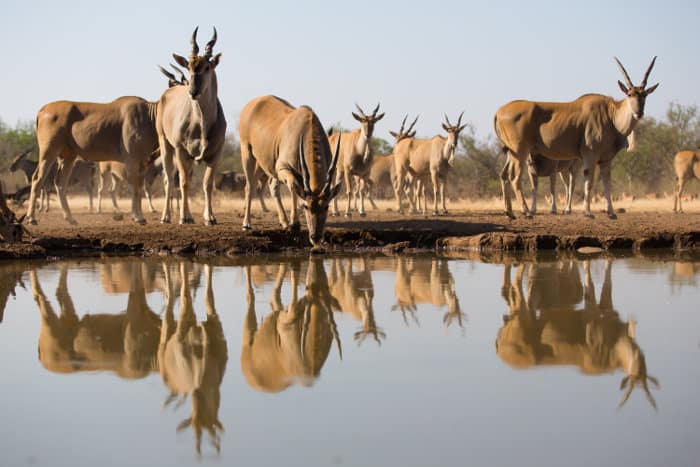
Are you surprised by what you’ve learned about common elands so far? Keep reading to discover some truly fascinating facts about this African animal.
- Elands have a pretty nifty way to conserve water when necessary. They can increase their body temperature, thereby reducing the need to sweat. When it gets cooler at dusk, the body heat is then released. This is incredibly useful on scorching hot days and when water sources are scarce.
- As an eland walks, its hooves create a very distinctive clicking sound. Scientists believe that sound emanates from the tendons or joints, yet it has never been fully investigated. Some researchers believe it may be a means of communication with other herds, as the sound can travel up to 2 km. Listen carefully when you’re on safari, you may hear them before you see them.
- Elands are a common feature in prehistoric rock and cave paintings across southern Africa. It was an important source of food and also a spiritual inspiration for hunter-gatherers.
- The common eland is very tame and docile. It is an easily domesticated animal and is much more suited to the African environment. A female can produce up to 7 kg of high-fat milk per day. For this reason, and their meat, South Africa and Russia have set up small scale eland farms.
- Eland milk has a substantially higher fat percentage than cow’s milk and at least double the protein.
- You can see the common eland on the Grootfontein coat of arms in Namibia.
- The antelope’s official name, Taurotragus oryx, indicates the common eland as a member of the Taurotragus genus and derives from Greek and Latin origins. ‘Tauros’ means bull, ‘tragos’ translates to he-goat and ‘oryx‘ means antelope or gazelle. So you may refer to the common eland as the bull he-goat antelope. It may not be the most charming name, but it is certainly fitting.
Discovering the Common Eland Antelope

It’s pretty crazy that a 900-kilogram antelope can jump close to three meters and raise its body temperature. It’s also fascinating that the behemoth common eland is a central character in prehistoric cave paintings, reiterating its importance in the African environment.
After all this, you must be eager to go out and see one for yourself. It won’t be easy, due to their timid nature, though it will be worth it. Book a safari now and go in search of one of Africa’s largest antelopes.
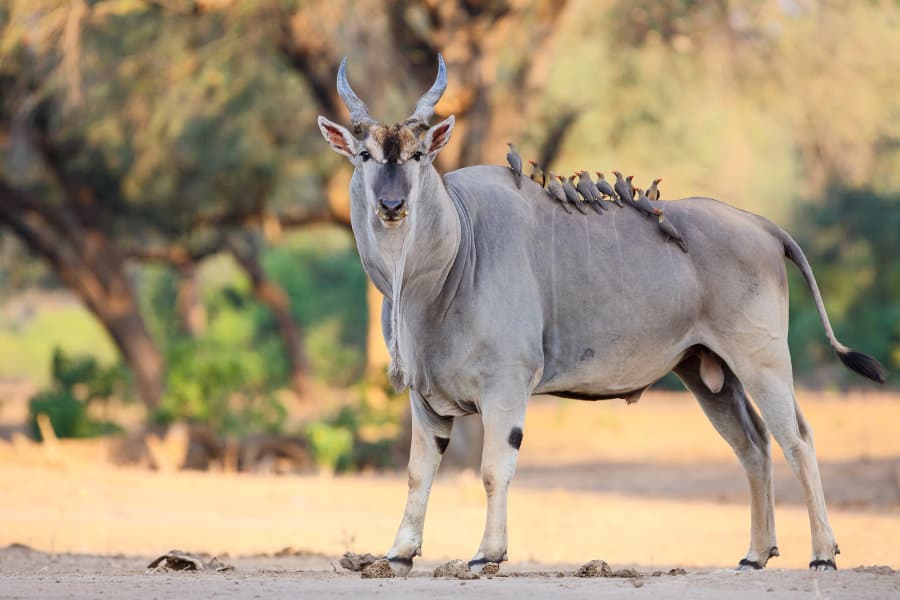

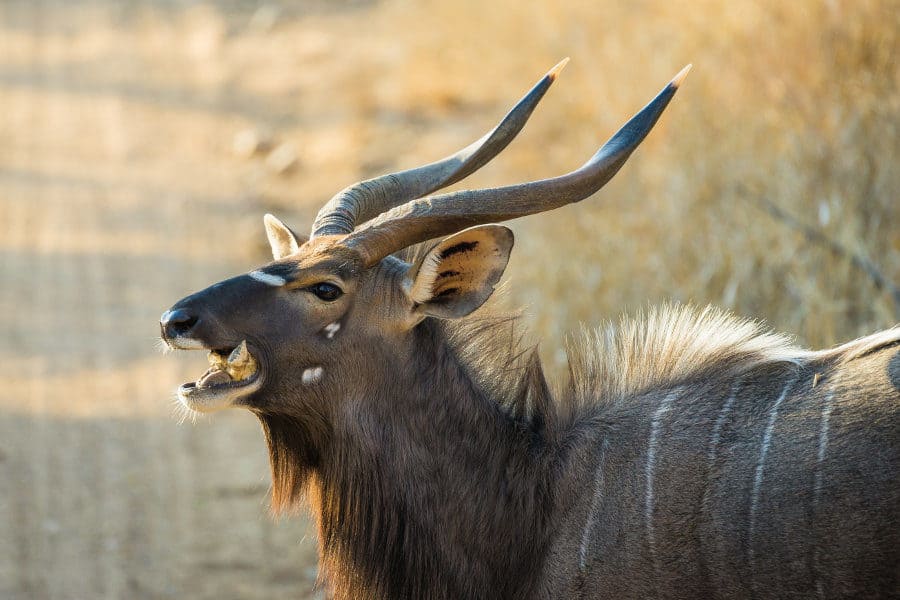
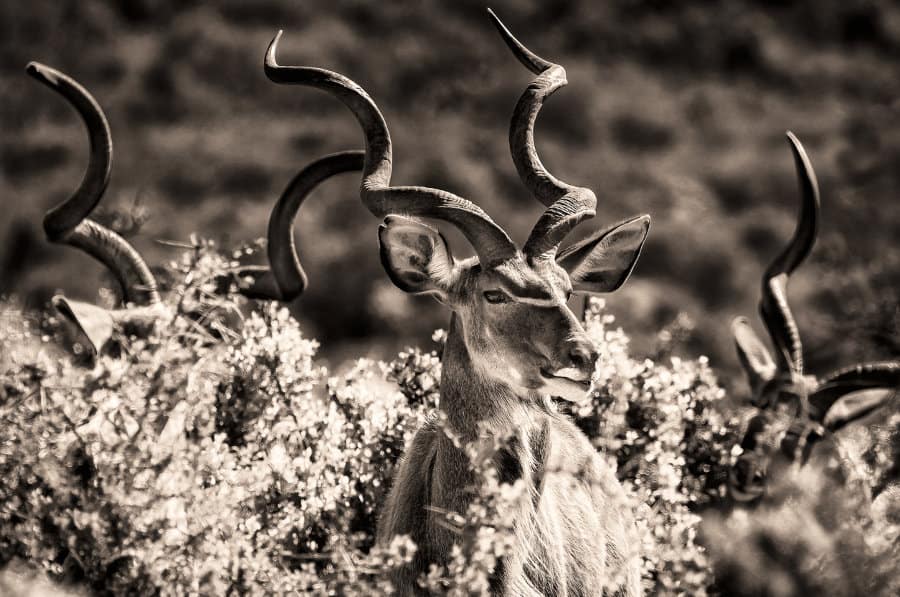
Wow, I love this animal!